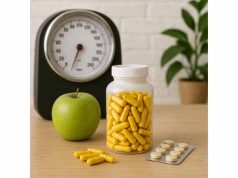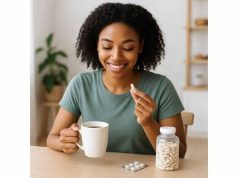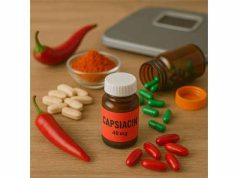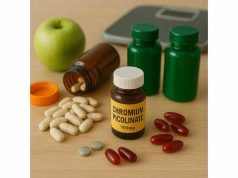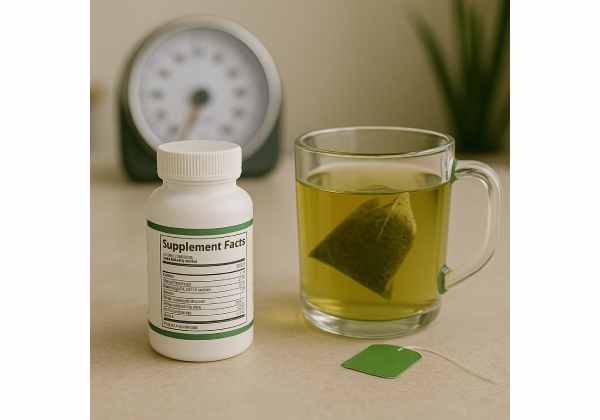
Green tea extract sits in the gray zone between “promising helper” and “overhyped.” Its star molecule—epigallocatechin gallate (EGCG)—pairs with a little caffeine to nudge calorie burn, support fat oxidation, and sometimes tame appetite. The catch: effects are modest, product quality varies, and higher doses can irritate the stomach or, rarely, the liver. If you approach it like a structured experiment—with the right dose, timing, and expectations—it can make a well-built plan slightly easier to follow. If you are weighing supplements alongside medical therapies or coaching, skim our overview of clinically supported options to see where green tea extract fits.
Table of Contents
- What is green tea extract (EGCG)?
- How EGCG helps weight loss
- Effective dose and timing
- How to choose a green tea extract
- Side effects and risks
- Who should avoid or be cautious
- What results to expect
- Frequently Asked Questions
What is green tea extract (EGCG)?
Green tea extract concentrates catechins—especially EGCG—from Camellia sinensis leaves. In supplements, the label usually lists the total extract (e.g., 500 mg) and sometimes the percentage of catechins or EGCG (e.g., “50% EGCG”). This standardization matters more than the capsule size; two bottles can deliver very different active amounts.
Why it’s discussed for weight loss:
- Thermogenesis and fat oxidation: Catechins and caffeine together slightly increase daily energy expenditure and shift the body toward using more fat for fuel.
- Appetite and meal control: Some people feel full sooner or snack less, especially when meals are protein-forward and structured.
- Glucose dynamics: Slower gastric emptying and modest enzyme effects can blunt sharp post-meal glucose spikes, which may reduce rebound hunger in some users.
Green tea extract is not a shortcut. At best, it helps a good plan work a little better. The biggest returns still come from a moderate calorie deficit, adequate protein, and regular resistance training. If you are rebuilding the basics—or want a quick refresher on meal structure, steps, and sleep—start with our evidence-based guide to safe weight loss foundations.
Brewed tea vs. extract
- Brewed green tea typically provides modest EGCG (often ~50–100 mg per cup, varying widely with brand and steep time) and a small dose of caffeine. It’s a gentle, low-risk option if you enjoy tea and monitor caffeine later in the day.
- Standardized extracts deliver predictable catechin doses in one or two capsules. They’re convenient for trials—but require more attention to quality, timing, and tolerance.
The role of caffeine
Some extracts are decaffeinated; others include 20–60+ mg of caffeine per serving. Caffeine can amplify thermogenesis but may worsen jitters or sleep if you dose late. If you already drink coffee or tea, add that caffeine to your total before choosing a product.
Bottom line: Green tea extract can be a small, supportive tool—useful when you already have structure, not a fix for the lack of it.
How EGCG helps weight loss
EGCG and caffeine act on overlapping pathways that influence how many calories you burn and what fuel you use. Understanding the “how” helps you place expectations correctly.
1) Thermogenesis: burning a few extra calories
Catechins inhibit enzymes that break down norepinephrine, a neurotransmitter that helps stimulate fat cells to release fatty acids. With more norepinephrine around—and a nudge from caffeine—brown and beige fat tissues burn slightly more energy as heat. In practical terms, think tens of calories per day, not hundreds. It’s a nudge, not an overhaul.
2) Fat oxidation: preference for fat as fuel
During low-to-moderate activity (walking, easy cycling), EGCG can shift substrate use toward fat. You won’t “spot reduce,” but you may rely a bit less on stored carbohydrate. The effect is subtle and most meaningful when you move daily and keep meals protein-forward.
3) Appetite and post-meal steadiness
By modestly slowing gastric emptying and smoothing post-meal glucose, some people feel fewer peaks and dips in energy—one reason late-afternoon snack impulses can drop. The effect is more noticeable with balanced meals than with grazing.
4) Synergy with caffeine
Caffeine (especially 50–200 mg early in the day) can amplify catechin effects on thermogenesis and training performance. That said, benefits vanish if sleep suffers. If your evenings are wired or your sleep tracker is unimpressed, go decaf for your extract and keep coffee tea earlier.
5) Why results vary so much
- Dose and standardization: “500 mg extract” is not the same as “500 mg EGCG.”
- Genetics and tolerance: Caffeine responders often feel more; slow caffeine metabolizers may feel worse.
- Meal pattern: A capsule can’t offset unstructured, ultra-processed snacking. Pair EGCG with protein, fiber, and routine.
- Sleep and stress: The hormones that drive appetite respond more to poor sleep than to any catechin capsule.
If caffeine timing and dosing are central to your routine, see our concise overview of effective caffeine use and safety so EGCG and caffeine work with—rather than against—your sleep and training.
Effective dose and timing
A smart trial balances enough EGCG to matter with low risk of side effects. Use these ranges as a starting point and personalize based on tolerance, total caffeine, and your clinician’s input.
How much EGCG?
- Start: ~150–200 mg EGCG once daily with food for 3–4 days.
- Typical target: 300–400 mg EGCG/day, split before 1–2 meals.
- Upper bound (do not exceed without medical supervision): Avoid supplement intakes approaching ≥800 mg EGCG/day. Higher intakes, especially on an empty stomach, have been associated with increased liver risk.
With food, not fasting
Take green tea extract with a meal or a snack that includes protein. This improves tolerance and likely reduces liver risk compared with empty-stomach dosing.
Caffeine or decaf?
- If sleep is fragile, choose decaf extracts and keep any separate caffeine early in the day.
- If mornings are your training window, a caffeine-containing extract (or separate coffee) before exercise can enhance performance and perceived effort. Avoid afternoon dosing if it pushes into bedtime.
Brewed tea as an alternative
If you prefer food-first approaches, brew 2–3 cups of green tea spread across morning and early afternoon. You’ll get modest catechins, hydration, and a small caffeine lift with a very low side-effect profile.
A two-week decision rule
Commit to 2 weeks at a consistent, tolerable dose. Track hunger (1–10) before and after target meals, snack frequency, and sleep. If you see no change—or your sleep suffers—stop. Don’t chase results by escalating doses.
Medication timing
Because EGCG and caffeine can affect how some oral drugs are absorbed, take your extract at a different time of day if your clinician advises it. This is especially relevant for certain thyroid or diabetes medications.
Quick math for labels
If a label reads “500 mg green tea extract, standardized to 50% EGCG,” you’re getting ~250 mg EGCG per serving. If it lists only “extract mg” without a percentage, you can’t know how much EGCG you’re taking—choose a different product.
How to choose a green tea extract
Not all capsules are created equal. Quality and clarity make the difference between a fair trial and wasted money.
1) Demand clear standardization
Look for EGCG milligrams per serving or, at minimum, a catechin/EGCG percentage with extract weight so you can calculate the real dose. Avoid “proprietary blends” that hide amounts.
2) Decide on caffeine content up front
- Decaf if you dose later or have sleep/anxiety issues.
- Caffeine-containing if you plan to time it before morning training and tolerate stimulants well. Confirm mg per serving and add it to your daily total.
3) Keep the ingredient list simple
Skip “fat burner” stacks that mix green tea with synephrine, yohimbine, or multiple stimulants. Stacks raise side-effect risk without solving the dose-clarity problem.
4) Verify quality
Choose brands that publish independent test results or recognized certifications. Reputable programs reduce the risk of contamination or mislabeling. If seals and batch certificates are new to you, our explainer on third-party testing shows what credible verification looks like.
5) Capsules vs. powders
Capsules are convenient and pre-measured. Powders are rare for green tea extract and can taste bitter; if you use one, mix with food and measure carefully.
6) Cost reality
Higher standardization and disclosed testing usually cost more—but save you from under-dosed capsules. A product that actually delivers the target EGCG is cheaper in the long run than a bargain bottle that doesn’t.
7) Red flags
Grandiose claims (“torch fat,” “melt belly”) and labels without EGCG specifics are immediate “no.” If the bottle hides caffeine content or pushes three-a-day fasting doses, keep walking.
Summary checklist
- EGCG mg disclosed and matches your target.
- Caffeine content clear (or clearly decaf).
- Third-party testing present.
- Simple formula, no stimulant stacks.
Side effects and risks
Green tea extract is widely used, but “common” is not “risk-free.” Most issues are gastrointestinal or sleep-related and improve with dose adjustments, food pairing, and timing.
Common effects
- Nausea or stomach discomfort—more likely at high doses or on an empty stomach.
- Reflux or burping—avoid big, greasy meals and late dosing.
- Jitters or sleep disruption—if the product contains caffeine or you add coffee on top.
- Headaches—often from dehydration, excess caffeine, or dosing late.
Less common but important
- Liver injury (rare): Reported primarily with high-dose extracts and fasting use. Symptoms include fatigue, dark urine, abdominal pain, itching, or yellowing of skin/eyes. Stop immediately and seek medical care if these occur. Take with food, do not exceed labeled doses, and avoid aggressive “fat burner” stacks.
Interactions and timing
- Diabetes medications: Appetite changes and delayed gastric emptying can affect glucose patterns; monitor closely if you adjust diet.
- Thyroid and other oral drugs: Space dosing if your clinician advises; EGCG/caffeine may change absorption rates for some medications.
- Anticoagulants: Regular brewed green tea contains vitamin K; standardized extracts usually have minimal vitamin K, but discuss any anticoagulant therapy with your clinician.
Practical fixes
- Take with a protein-containing meal.
- Split total EGCG into two smaller doses.
- Choose decaf if sleep or anxiety is an issue.
- Hydrate, especially if you also drink coffee or tea.
Green tea extract often appears in “fat burner” blends that add multiple stimulants. If you’re tempted by those, review the risks summarized in our guide to stimulant-heavy weight-loss products before stacking.
Who should avoid or be cautious
Most healthy adults tolerate modest, food-paired doses well. The following groups should avoid green tea extract or get tailored medical guidance first.
Avoid unless cleared by your clinician
- Pregnant or breastfeeding individuals: Safety data are limited; avoid.
- People with known liver disease or unexplained abnormal liver tests.
- Adolescents: Focus on growth, habits, and medical guidance when needed.
Use added caution and medical input
- Type 2 diabetes or prediabetes on medications: Adjustments may be needed as appetite changes; monitor glucose.
- History of reflux, gastritis, or sensitive stomach: Start low, always take with food.
- Anxiety disorders or insomnia: Choose decaf, dose early, and keep a firm caffeine cutoff.
- Thyroid replacement or narrow therapeutic-index medications: Ask about spacing doses and monitoring labs.
Stop and seek care if you notice
- Persistent nausea/vomiting, severe abdominal pain, dark urine, itching, or yellowing of skin/eyes.
- Palpitations, dizziness, or unusual anxiety after dosing that does not improve with timing changes.
If your primary goal is meaningful, durable weight loss and you also have obesity-related health risks, talk with your care team about prescription options. A clear overview of how these medicines work and who qualifies is in our guide to weight-loss medications.
What results to expect
Set expectations by what shows up consistently in real use: subtle support, not transformation.
Best-case scenario
- A small daily increase in calorie burn (think ~70–100 kcal for some users when paired with caffeine) and a mild improvement in fat oxidation.
- Smoother appetite after starch-heavy meals, especially when you anchor meals with 25–35 g protein and some fiber.
- A little more training “pop” when you time caffeine earlier in the day.
Typical real-world outcome
- Over weeks to months, some people see a modest edge—fewer snacks, slightly smaller portions, steadier energy—translating into small additional losses when the basics are in place. Others notice no meaningful change and are better off redirecting effort to higher-yield tactics.
Why your mileage may vary
- Dose clarity: If your capsule hides EGCG content, you may be under-dosing.
- Caffeine tolerance and sleep: Benefits evaporate if sleep quality drops.
- Diet structure: Unplanned liquid calories and restaurant portions can outrun any catechin effect.
- Consistency: A capsule you take daily beats a “perfect” plan you abandon.
How to measure success
- Track hunger (1–10) before/after meals, snack counts, and weekly weight trends—not daily fluctuations.
- Review sleep: if your tracker or morning energy dips, switch to decaf or earlier dosing.
- After two weeks at a fair dose, decide: keep (if benefits > side effects) or cut (if neutral/negative) and invest elsewhere.
Alternatives with more predictable returns
- Fiber before meals for appetite control (e.g., psyllium 15–30 minutes pre-dinner). See our practical comparison in fiber options.
- Caffeine timed to training if tolerated, with a strict afternoon cutoff (details in caffeine dosing).
- Structured meals + resistance training—the highest ROI for most people.
Frequently Asked Questions
How much EGCG should I take for weight loss?
Many people trial 150–200 mg EGCG once daily with food for several days, then 300–400 mg/day split before 1–2 meals if tolerated. Avoid high doses and do not take on an empty stomach. If nothing changes after two weeks, stop and reallocate effort.
Is brewed green tea as effective as capsules?
Brewed tea provides smaller, variable amounts of EGCG and some caffeine, with excellent tolerance. Standardized extracts deliver predictable doses and are better for short trials, but they require careful timing and quality checks. Choose based on your goals, caffeine habits, and stomach.
Should I choose decaf or caffeine-containing extract?
If sleep or anxiety is a concern—or you dose later in the day—choose decaf. If you train in the morning and tolerate stimulants, a caffeine-containing extract (or separate coffee) may add a small performance boost. Always count total daily caffeine from all sources.
Can green tea extract hurt the liver?
Serious liver injury is rare but has been reported, especially with high-dose extracts taken fasting. Reduce risk by taking with food, avoiding excessive doses, and skipping stimulant stacks. Stop immediately and seek care if you notice dark urine, abdominal pain, itching, or yellowing eyes/skin.
Does EGCG interact with medications?
It can. Slower stomach emptying and caffeine may affect how some oral drugs are absorbed. People using thyroid or certain diabetes medications should ask about spacing doses and monitoring. Always review supplements with your clinician or pharmacist before starting.
Will green tea extract make a big difference on the scale?
Expect a small edge at best—fewer snacks, slightly smaller portions, and a minor bump in calorie burn—when paired with a structured plan. Without consistent nutrition, protein, movement, and sleep, effects are usually negligible.
References
- Effects of green tea supplementation on obesity indices and adipokines in adults: a grade-assessed systematic review and dose-response meta-analysis of randomised controlled trials 2025 (Systematic Review)
- The effects of green tea extract supplementation on body composition, obesity-related hormones and oxidative stress markers: a grade-assessed systematic review and dose-response meta-analysis of randomised controlled trials 2024 (Systematic Review)
- AASLD practice guidance on drug, herbal, and dietary supplement–induced liver injury 2023 (Guideline)
- United States Pharmacopeia (USP) comprehensive review of the hepatotoxicity of green tea extracts 2020 (Systematic Review/Position Statement)
- Scientific opinion on the safety of green tea catechins 2018 (Scientific Opinion)
Disclaimer
This article is for educational purposes and is not a substitute for personalized medical advice, diagnosis, or treatment. Always consult a qualified healthcare professional before starting or changing supplements—especially if you take prescription medications, are pregnant or breastfeeding, have liver disease, or manage diabetes.
Share and follow
If this guide clarified how to use green tea extract wisely, consider sharing it with someone comparing supplements. For practical, evidence-based updates, follow us on the platform you use most—Facebook, X, or another network you prefer. Your questions and feedback help us keep these guides useful.



